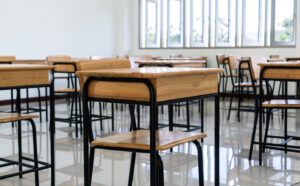In Maryland’s public schools, ‘average’ isn’t very good
Maryland’s education department released its public-school report card, revealing over 25% of schools lost at least one star out of five.
The report, from the Maryland State Department of…

Maryland’s education department released its public-school report card, revealing over 25% of schools lost at least one star out of five.
The report, from the Maryland State Department of Education (MSDE), grades schools on a scale of 1 to 5 stars, using metrics such as test scores, graduation rates, readiness for college and career, and chronic absenteeism.
Compared to 2019 scores, only 11% of schools improved enough to gain a star. Most stayed in the same category, but 27% worsened. In the latest report, 65% of schools ranked either 3 or 4 stars, and two- and five-star schools make up 16% of Maryland’s system.
MSDE tried to put a positive spin on the data in its press release, stating, “75% of Schools Earn 3, 4, or 5 Star Ratings.”
However, the “average” 3-star schools, and even their 5-star counterparts, are worse than their scores suggest.
For example, math proficiency in 3-star schools is a bleak 13%. Chronic absenteeism was 33.5%. Even 5-star schools only reported 54% in math and 14% absenteeism.
Even the scores of underperforming one-star schools are shocking: 1% math proficiency and 68% absenteeism.
In Baltimore, where most schools (75%) scored either one or two stars, the district’s statement on the report could find little positive, except its “belief” that current strategies will improve performance “over time.”
“The Maryland School Report Card and Star ratings provide clarity for our schools related to state accountability and a clearer understanding of how our recovery strategies are impacting learning and achievement,” said Sonja Santelises, CEO of Baltimore’s public schools. “While the immediate results are not surprising, we strongly believe that we have strategies that, over time, will lead to enhanced student achievement.”
The State Superintendent Mohammed Choudhury gave a similarly feeble statement.
“The data collected from the 2022 Report Card is the starting point for us to shape local education agency policy and work toward implementing evidence-based, best-in-class work to drive student outcomes,” said Choudhury.
However, neither the superintendent nor the state Board of Education president discussed what changes might be implemented to increase student learning outcomes or attendance.



